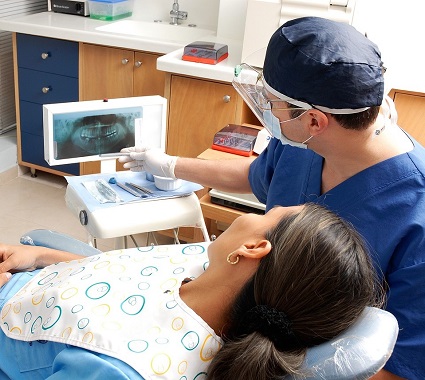 If you need a plastic surgery, choosing a clinic is a major decision you just cannot afford to take casually. Your choice of clinic is a decision that can impact not just your health, but also appearance, and confidence.
If you need a plastic surgery, choosing a clinic is a major decision you just cannot afford to take casually. Your choice of clinic is a decision that can impact not just your health, but also appearance, and confidence.
With the increasing popularity of cosmetic procedures, many clinics promise exceptional results. However, not all clinics are trustworthy or reputable.
To find the right plastic surgery clinic in Singapore, you will need to carefully research and compare your options. It will also be crucial to prioritize safety, expertise, and patient satisfaction.
We created this guide to clarify what to look for when you want to identify a trustworthy plastic surgery clinic in Singapore. On this page, you will discover key factors to consider and important questions to ask yourself before making a decision. Can we begin?
What to Look for in a Trustworthy Plastic Surgery Clinic
Not every plastic surgery clinic in Singapore is what they claim to be. Before committing to a clinic, it is recommendable that you take the time to evaluate its credibility. Here are the key elements to consider:
* Board-Certified Surgeons
The most critical factor is the qualifications of the surgeons. Ensure the clinic’s surgeons are certified by recognized medical boards.
Board certification as simple as it may seem indicates that the surgeon has undergone extensive training, passed rigorous exams, and adheres to high standards of practice. In Singapore, check for accreditation by the Ministry of Health (MOH) or the Singapore Medical Council (SMC).
* Positive Patient Reviews and Testimonials
Genuine patient reviews will give you the clearest picture in regards to the clinic’s quality of care and results. You can find these testimonials on the clinic’s website and independent review platforms.
As you read the past patients’ reviews, please pay attention to; consistently positive feedback, detailed accounts of patient experiences and before-and-after photos shared by real patients. If before-and-after photos aren’t available on the review platforms, feel free to request for them from the clinic.
* Transparent Communication
This is key. A good plastic surgery clinic in Singapore should value open and honest communication. You can tell the clinic is reliable if the staff answers all your questions thoroughly and also takes time to explain procedures, risks, and expected outcomes clearly.
It also goes without saying that pricing should be transparent. A good plastic surgery clinic in Singapore will be happy to provide detailed cost breakdowns without hidden fees.
* Clean and Accredited Facilities
The clinic’s environment speaks volumes about its professionalism and commitment to safety. You will want to visit the clinic to assess cleanliness and hygiene standards which should be top.
During your tour of the facility, check for the availability of modern equipment and technology. Importantly, check to ensure that the clinic is accredited by relevant health authorities.
* Commitment to Comprehensive Pre- and Post-Operative Care
You will know your chosen plastic surgery clinic in Singapore is trustworthy if they provide thorough support before and after surgery. They should offer pre-surgery consultations to discuss goals and expectations and also provide detailed aftercare instructions and follow-up appointments.
But it doesn’t end there. With plastic surgeries, there is always some level of risk. A good plastic surgery clinic should have measures put in place to address complications or concerns promptly.
Questions to Ask Yourself Before Choosing a Plastic Surgery Clinic
Choosing a clinic isn’t just about their qualifications. It’s also about how comfortable you feel. Before making the final decision on a clinic, here are some questions you will want to ask yourself;
* Are My Goals Realistic? Understand what you want to achieve and ensure your expectations are realistic. A reputable clinic will help set achievable goals rather than promising perfection.
* Do I Feel Comfortable with the Surgeon? Trust your instincts when meeting the surgeon. In a top plastic surgery clinic in Singapore, the providers should be able to; listen attentively to your concerns, explain procedures in a way you understand, and make you feel confident and at ease.
* Have I Done Enough Research? Remember this is your appearance or possibly your general health that you’re putting on the line. With that in mind, you do not want to take any chances. So, research is essential to finding the right clinic. As you research, compare multiple clinics and surgeons, read reviews and patient testimonials and ask for recommendations from trusted friends or family.
* Am I Prepared for the Costs? Let’s just say it; plastic surgery can be expensive. So, ensure you understand: the total cost, including consultations, surgery, and follow-ups. Also, ask about payment plans or financing options if needed. Importantly, confirm whether the clinic’s pricing aligns with your budget.
* Do I Know the Risks? Let no one lie to you. All surgical procedures (including the least invasive ones) carry risks. Ask yourself:
1. Have I been informed of potential complications?
2. Am I willing to accept the risks involved?
3. Do I feel reassured by the clinic’s safety protocols?
What Are the Red Flags to Watch For when Looking for a Plastic Surgery Clinic?
As you probably already understand, some clinics may prioritize profits over patient safety. Watch out for these warning signs:
* Unrealistically Low Prices: We totally get it; affordable options are appealing. But you should be concerned about extremely low prices which may indicate: inexperienced surgeons, subpar facilities compromised safety standards.
* High-Pressure Sales Tactics: A honest plastic surgery clinic in Singapore won’t pressure you into making a quick decision. Be cautious of clinics which insist on; limited-time offers or discounts or clinics with staff pushing unnecessary procedures. You should also be warry of surgeons dismissing your concerns.
* Lack of Credentials: Before trusting a clinic with your body, take the time to verify the surgeon’s qualifications and the clinic’s accreditation. Avoid clinics that refuse to share credentials, have no record of certifications or lack affiliations with reputable medical boards.
* No Follow-Up Care: Post-operative care is essential for recovery. With that in mind, be wary of clinics that don’t provide clear aftercare instructions or are difficult to contact after the procedure. You should also tread with care in situations where clinics offer limited or no follow-up appointments.
In Closing
Choosing a trustworthy and reputable plastic surgery clinic is essential for a safe and satisfying experience. So, resist the urge to rush the process and take your time to research and evaluate your options.







